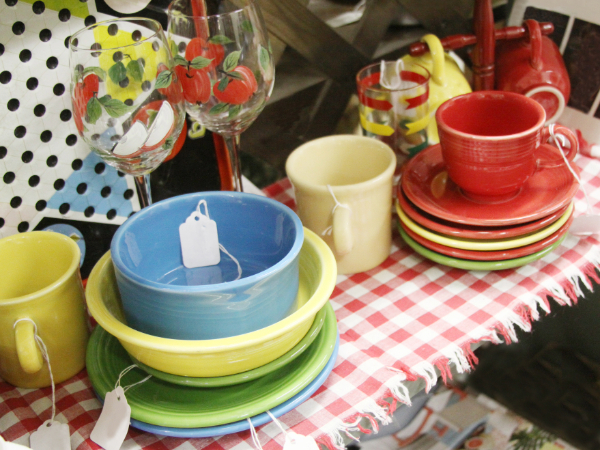
Buying and selling used items helps your community, your wallet, and the environment. But how? The sad truth is that Americans make tons of garbage – literally. According to the EPA, the average American throws away more than 4.9 pounds of trash per day. One way to avoid such waste and to save money is to buy and sell used items. It can also be a rewarding and fun way to help the planet!
We all know that a great way to help the environment is to reduce, reuse, and recycle. Many of us already recycle, and this is great. But when you buy or sell used items, you are reducing and reusing at the same time. When you purchase a used item that you need, you don’t buy a new one, and you reduce the number of items that would have been produced otherwise. You are also reusing an item that may have been thrown away or gone unused in someone else’s home. Buying used also saves money. The same concept applies to selling an item instead of throwing it into the trash, except you have the added benefit of making money and clearing out the clutter.
For those who are thinking about selling used items or shopping for them, here is a list of reuse do’s and don’ts.
DO’s
- Never assume that no one would be interested in what you have to offer. Plenty of people would be very interested in your Grandma’s colorful vintage Fiesta dinnerware collection and may be willing to pay a lot for it.
- Before shopping for used goods, have a plan. Walking into a thrift store can be overwhelming, even for seasoned thrifters. Focus on what you need, and try not to get distracted. You don’t save money if you buy items you won’t use.
- Have an open mind. Looking in Habitat for Humanity ReStores, Goodwill Stores, Salvation Army Stores, local charity thrift stores, and garage sales are all great options. If you feel comfortable with online marketplaces, check out Craigslist, Facebook Marketplace, Nextdoor, Freecycle, eBay, and Poshmark. When buying and selling through an online marketplace, please consider ways to stay safe, such as meeting in a public location for the purchase.
- Be realistic. If you have something you don’t need, and it isn’t worth much or might be hard for you to move or dispose of, be a good neighbor and offer it for free. You will save the hassle and expense of transporting and landfilling it, and someone might find a use for it.
- Do your homework. Look for reviews of the item you are shopping for ahead of time to spot potential problems. Do your research to look up the going price for used items. If purchasing something online, look for clear pictures and accurate measurements. Most reuse items are non-returnable.
DON’Ts
- Don’t feel like others are watching you and judging you. People don’t really care if you are shopping for used goods. If you are worried about seeing someone you know at the thrift store, remember that everyone there, including you, is working to help the earth.
- Don’t try to sell dirty or damaged items at high prices. If you are trying to sell your used goods, thoroughly clean each item, take good pictures, and accurately describe them. Price your used items fairly.
- Try not to get frustrated if you don’t find what you are looking for. All reuse marketplaces have a fast turnover, so you will most likely find a treasure the next time you give it a try.
Most importantly, have fun and be patient. We promise that once you have a taste of reuse success, you will be hooked.
Photo credit: JTGrafix | E+ | Getty Images
